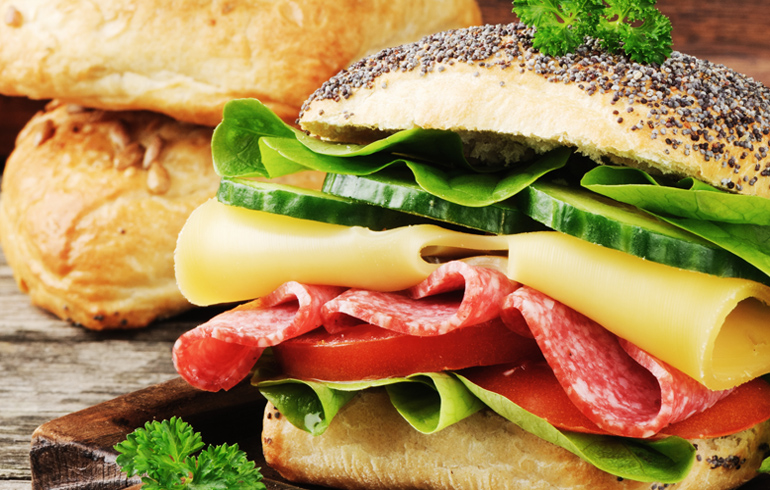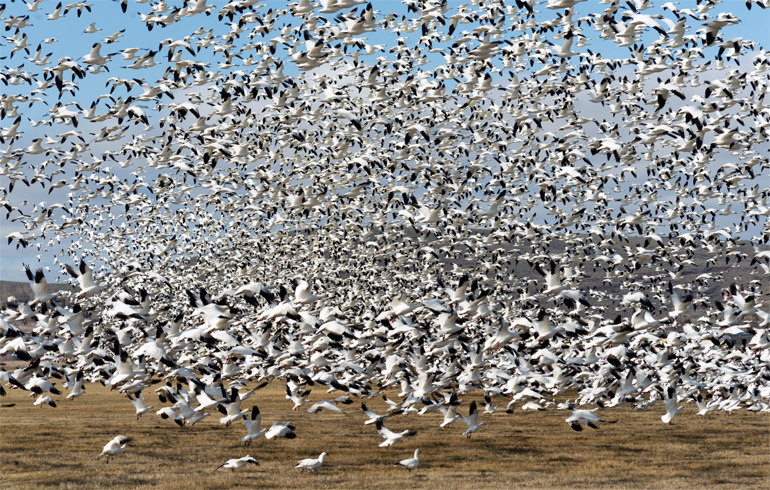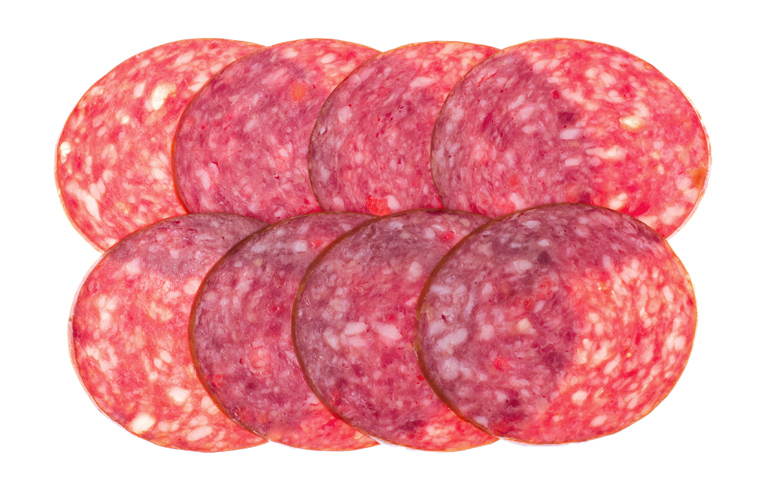Edible Snow Geese – Here’s How?
If you ask a group of waterfowlers to name their favorite duck or goose, chances are good that the answers won’t include “snow goose.” For whatever reason, snow geese get a bum rap.
I serve people snow geese often, but I don’t tell them it’s snow goose until after they’re just about done eating it. I did have one guy tell me that snow goose was, by far, the best tasting goose out there. He told me about how he cut the breast fillets into little strips and then marinated them in teriyaki sauce for 2 days. After that he wrapped the marinated goose in jalapeno, cream cheese and bacon. I’m fairly certain that you could do the same thing with a piece of your shoe and it would taste about the same.

I serve people snow geese often, but I don’t tell them it’s snow goose until after they’re just about done eating it. I did have one guy tell me that snow goose was, by far, the best tasting goose out there. He told me about how he cut the breast fillets into little strips and then marinated them in teriyaki sauce for 2 days. After that he wrapped the marinated goose in jalapeno, cream cheese and bacon. I’m fairly certain that you could do the same thing with a piece of your shoe and it would taste about the same.

Snow geese are often referred to as “sky carp” because they are thought to be off-tasting. Oh sure, I’ve had some that weren’t great, but I’ve also had mallards that tasted a little funky as well. Until we start genetically engineering our game meats, there will always be variables that affect their flavor. You can go to the market and buy a great steak, but it may not be as great a week or two later. Two deer, both the same sex and age, that are harvested in the same location can taste different as well. But whether your solution to preparing some of the less popular game includes bacon-wrapped “poppers,” jerky or a slow-cooker, there is always a way to make them edible, if not outright delicious.
I really enjoy a post-regular season snow goose hunt. But no limits can mean a big pile of geese at the end of the hunt and I don’t know anyone who looks forward to processing a truckload of geese. During the regular season, I use just about every part of my geese. During conservation hunts, I usually just remove the breast fillets and turn the bulk of them into sausage. Ground goose breast mixed with pork and seasonings can be transformed into any type of sausage. The flavor is almost identical to sausage made from any antlered game. Really.
For those folks who are new to making sausage, there are a number of great sausage kits on the market with a variety of flavors. I’ve tried every variety of Hi Mountain Sausage Kits and they’re all tasty and very user-friendly. They include cures, seasonings, casings you can stuff by hand and detailed instructions on how to turn most game into great-tasting deli-quality meats.

Snow Goose Summer Sausage
The wrapped and ready sticks can be loaded into a smoker or oven. Note that the recipe calls for 4 pounds of ground goose meat. It’s best to use a kitchen scale to weigh the meat, however, a pound of moderately packed ground meat equals roughly 2 cups. If you don’t have access to a meat grinder, cut the goose meat into 1 or 2-inch chunks and pulse in batches with a food processor.
Makes 5 one-pound sticks
4 pounds ground boneless, skinless goose breast fillets (8 cups, firmly packed)
1 pound ground pork
2 tablespoons Morton® Tender Quick® – measured precisely!
1/3 cup minced fresh garlic cloves
1/4 cup coarse ground black pepper
2 tablespoons water
1 tablespoon red pepper flakes
2 teaspoons mustard seed
2 teaspoons kosher salt
- Combine ground meats in a large glass, stainless steel or plastic bowl (not aluminum). Sprinkle cure over meat, add remaining ingredients and mix very well. Cure must be evenly distributed. When mixed thoroughly, meat should be a little sticky.
- Cover bowl and place in the refrigerator. Every 12 hours, mix again thoroughly, cover and refrigerate.
- After 48 hours, divide meat mixture into 5 equal portions and roll into logs, about 2-inches thick. Place each on a square of heavy-duty aluminum foil, shiny side up, and wrap snugly with foil. Pierce each log 3 or 4 times with a fork.
- Arrange foil logs on a rack above a baking sheet (to catch any drippings). Place in a preheated 200-degree oven or smoker until the internal temperature at the center reads 160 degrees, about 6 to 8 hours.
- Allow meat to thoroughly cool before slicing. Summer sausage can be re-wrapped in butcher paper or vacuum-packed and refrigerated for up to 2 weeks or frozen for up to a year.




